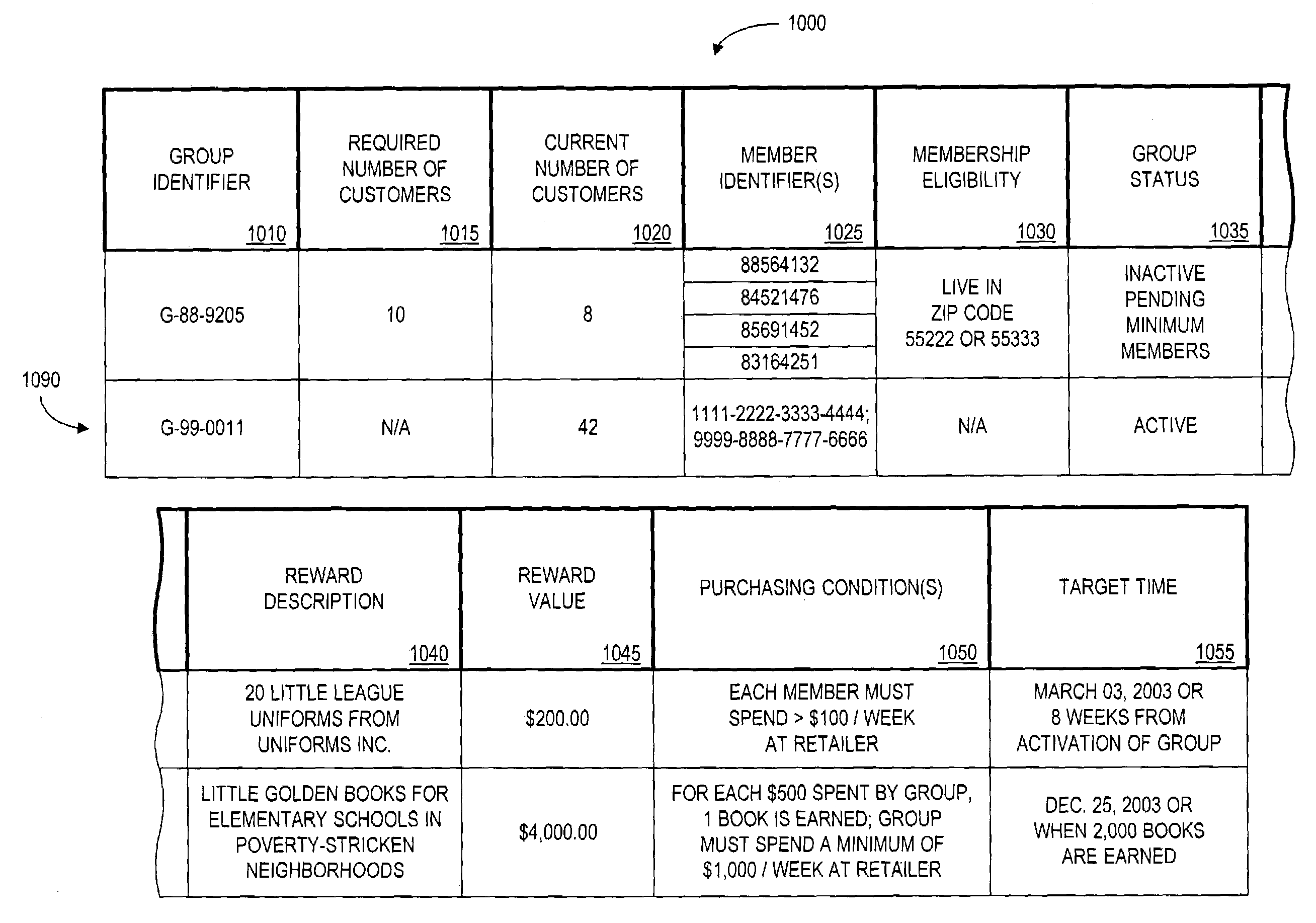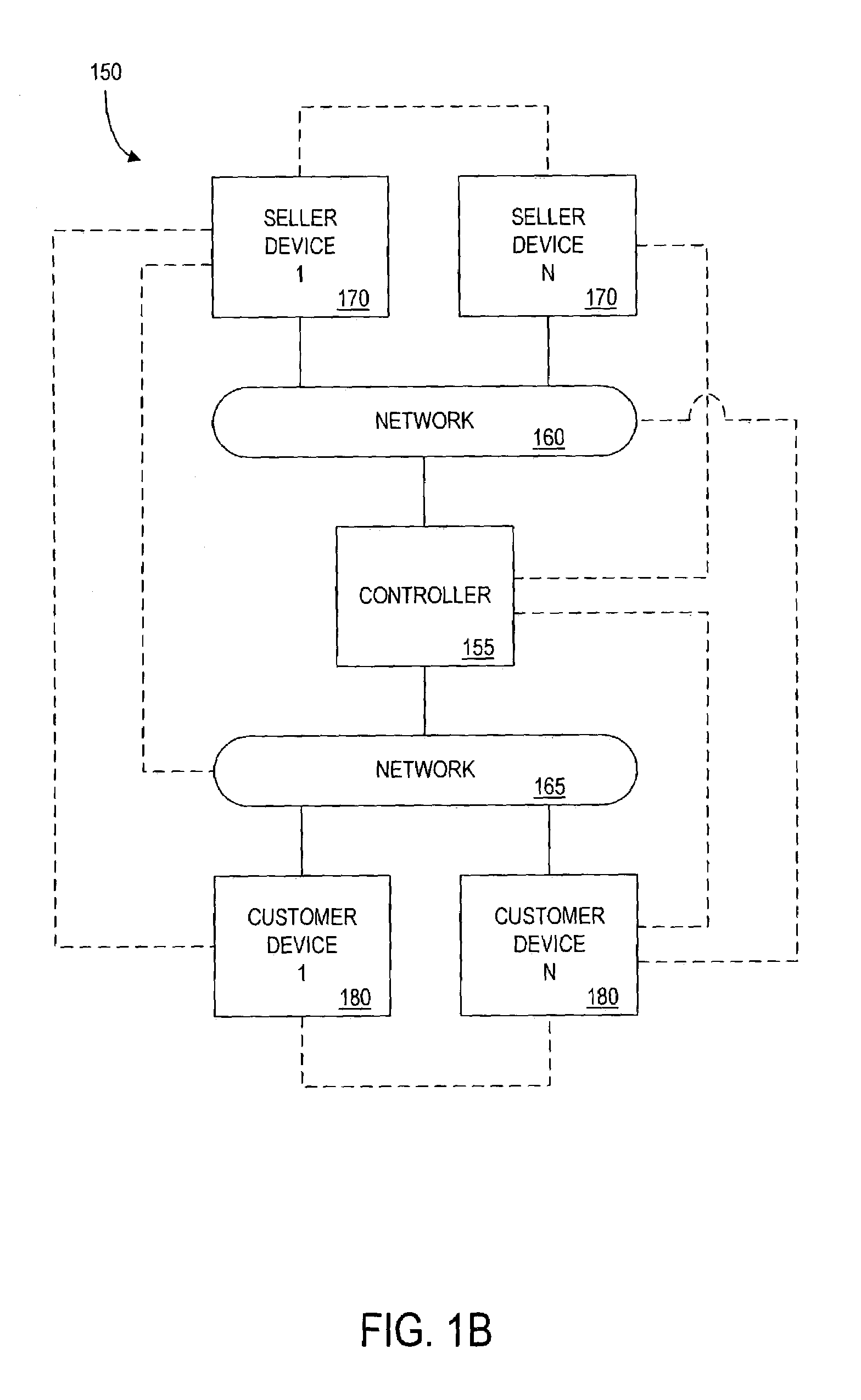Systems and methods for facilitating group rewards
a group reward and group technology, applied in the field of system and method for facilitating group rewards, can solve the problems of loss of potential sales to the retailer, loss of sales potential to the retailer, and large retailer sales
- Summary
- Abstract
- Description
- Claims
- Application Information
AI Technical Summary
Benefits of technology
Problems solved by technology
Method used
Image
Examples
example 1
[0180](i) Rule 1: Determining a minimum aggregate purchase total for the group.[0181]For each $5 of the value of the reward, add $50 to the minimum amount the group's purchases must total over the course of earning the reward[0182](ii) Rule 2: Determining a minimum number of customers to be included in the group.[0183]For each $25 value of the reward over $50, add an additional customer to the minimum number of customers above 2[0184](iii) Rule 3: Determining a number of purchases to be made by the group.[0185]For each $25 value of the reward, add 1 week of purchases over 3 weeks (1 purchase to be made per week)
[0186]Assume the value of the reward was determined to be $200 in step 1215.[0187]Applying the above rules to the value of $200, the following purchasing conditions are determined:[0188](i) Applying Rule 1: group must spend a total of $2,000 to earn the reward:
($200) / ($5)=40
(40)($50)=$2,000[0189](ii) Applying Rule 2: the group must include at least eight customers:
$200−$50 =$...
example 2
[0196]In addition to the rules of Example 1, assume the following rule is utilized to determine the minimum purchase total for each customer comprising the group:[0197]Rule 4: Set the minimum purchase total for each required transaction to be at least 110% of the customer's average purchase total of prior purchases.[0198]Assume that one of the customers that is to be a member of the group for which purchasing conditions were determined in the prior example is associated with an average purchase total of $40. Recall that in the above example the minimum purchase total for each transaction was determined to be $23.[0199]Applying Rule 4, however, to determine the minimum purchase total for this particular member of the group results in a minimum purchase total of $44:
($40)(110%)=$44.[0200]Accordingly, the purchasing conditions output to the group in the above example may specify that this particular customer has to spend at least $44 every week for 11 weeks. A similar calculation may b...
PUM
 Login to View More
Login to View More Abstract
Description
Claims
Application Information
 Login to View More
Login to View More - R&D
- Intellectual Property
- Life Sciences
- Materials
- Tech Scout
- Unparalleled Data Quality
- Higher Quality Content
- 60% Fewer Hallucinations
Browse by: Latest US Patents, China's latest patents, Technical Efficacy Thesaurus, Application Domain, Technology Topic, Popular Technical Reports.
© 2025 PatSnap. All rights reserved.Legal|Privacy policy|Modern Slavery Act Transparency Statement|Sitemap|About US| Contact US: help@patsnap.com



